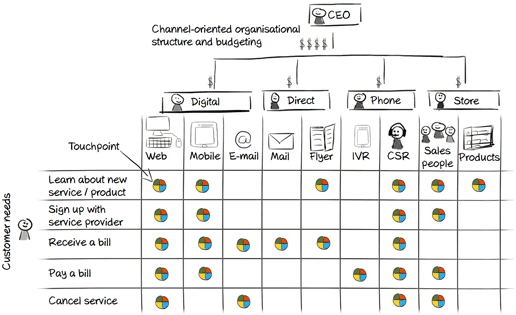
Don’t build a mobile app just because you can! A framework for service design
Unlike products, services are delivered over time through a series of interactions between a customer and a service provider, which we call touchpoints. Service companies are typically structured around channels e.g. digital, direct, phone, etc. As a result, the budget is also assigned in the same way. In this article I present a simple framework you can use to design services across organizational silos, resulting in a better customer experience, increased efficiency, and cost savings.
